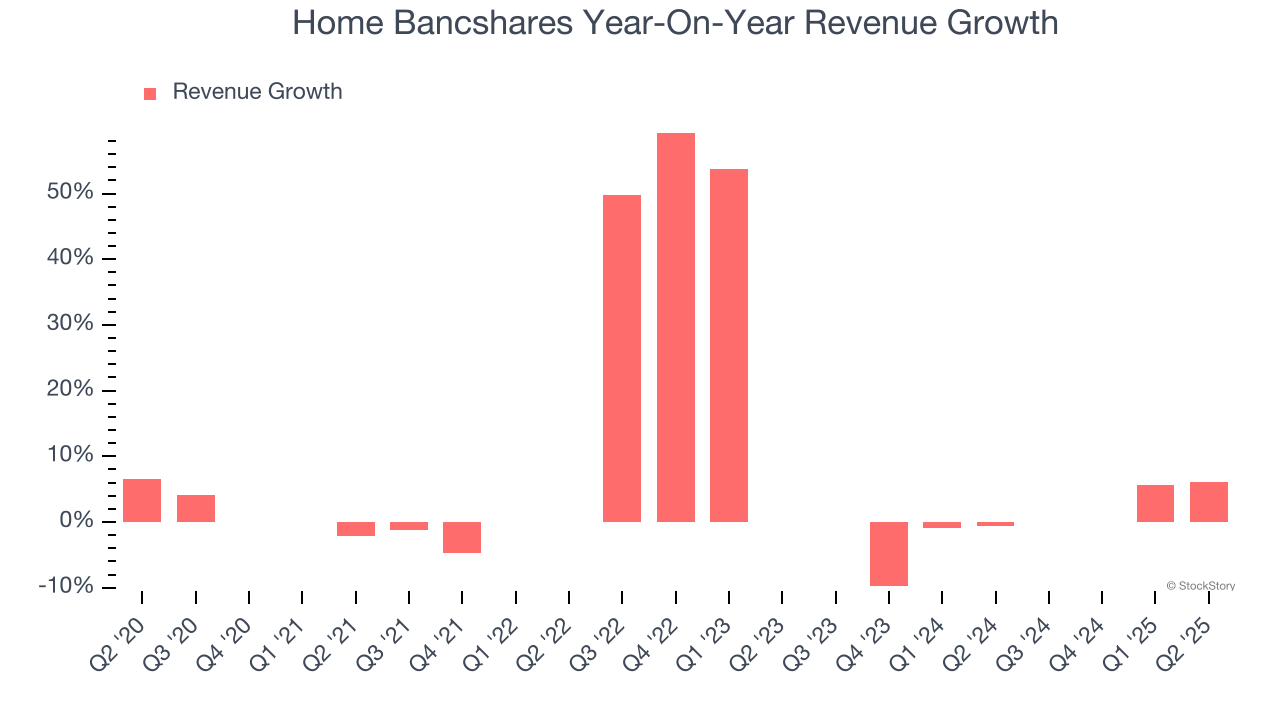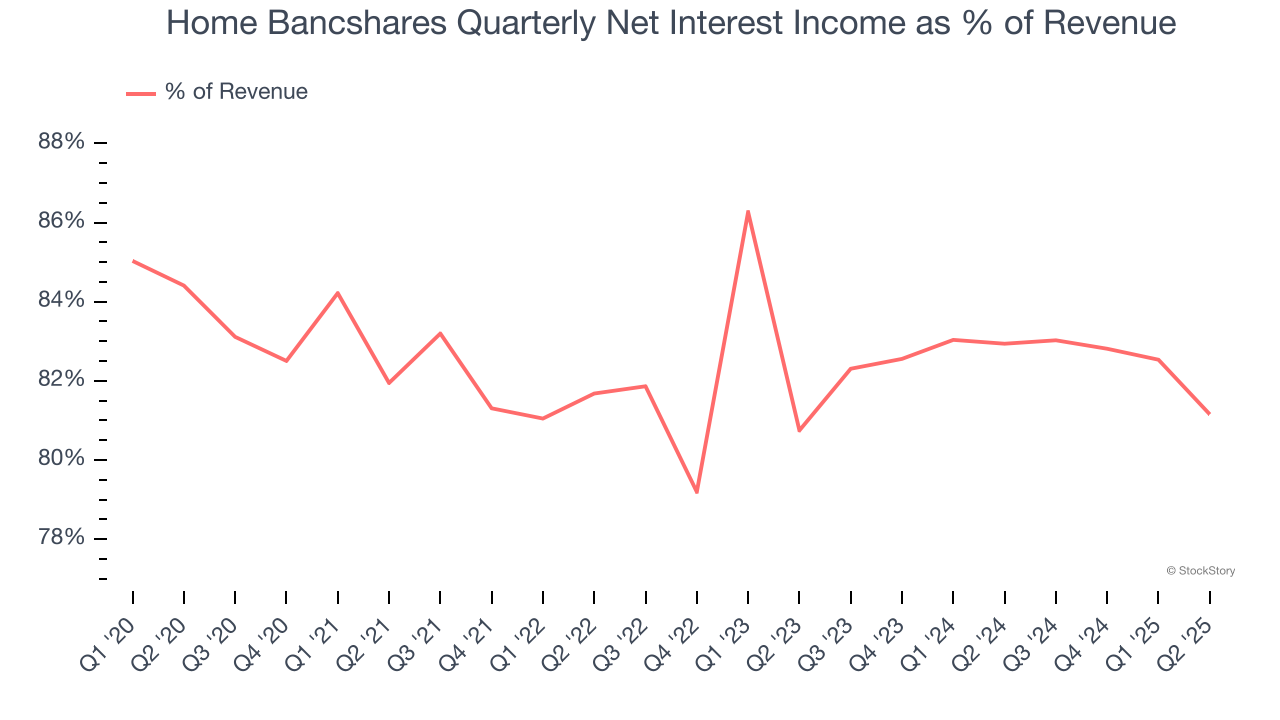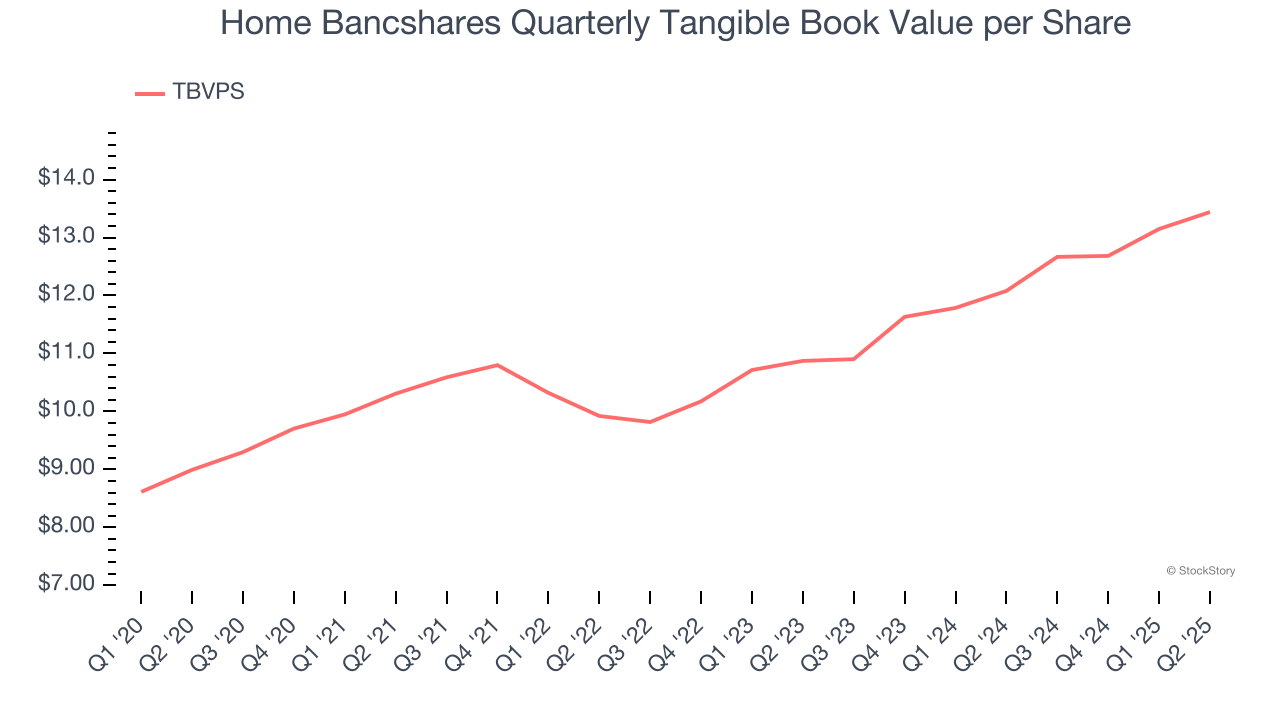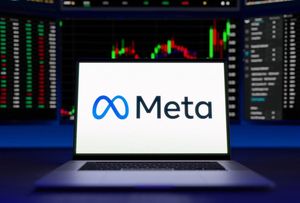
Regional banking company Home Bancshares (NYSE: HOMB) reported Q2 CY2025 results beating Wall Street’s revenue expectations, with sales up 6.1% year on year to $271 million. Its non-GAAP profit of $0.58 per share was 2.2% above analysts’ consensus estimates.
Is now the time to buy Home Bancshares? Find out by accessing our full research report, it’s free.
Home Bancshares (HOMB) Q2 CY2025 Highlights:
- Net Interest Income: $220 million vs analyst estimates of $218.7 million (3.8% year-on-year growth, 0.6% beat)
- Net Interest Margin: 4.4% vs analyst estimates of 4.4% (17 basis point year-on-year increase, in line)
- Revenue: $271 million vs analyst estimates of $260.6 million (6.1% year-on-year growth, 4% beat)
- Efficiency Ratio: 41.7% vs analyst estimates of 42.9% (1.2 percentage point beat)
- Adjusted EPS: $0.58 vs analyst estimates of $0.57 (2.2% beat)
- Market Capitalization: $5.63 billion
"I am once again very pleased with our quarterly results. Diluted EPS of $0.60 and net income of $118.4 million are both records for HOMB. The ongoing, consistent performance from our bankers led to numerous other records being set in the second quarter, further highlighting that strength is no accident," said John Allison, Chairman & CEO of HOMB.
Company Overview
Founded in Conway, Arkansas in 1998 and growing through strategic acquisitions across the Southeast, Home Bancshares (NYSE: HOMB) operates as the bank holding company for Centennial Bank, providing commercial and retail banking services to businesses and individuals across multiple states.
Sales Growth
In general, banks make money from two primary sources. The first is net interest income, which is interest earned on loans, mortgages, and investments in securities minus interest paid out on deposits. The second source is non-interest income, which can come from bank account, credit card, wealth management, investing banking, and trading fees.
Thankfully, Home Bancshares’s 9.2% annualized revenue growth over the last five years was impressive. Its growth beat the average bank company and shows its offerings resonate with customers.

We at StockStory place the most emphasis on long-term growth, but within financials, a half-decade historical view may miss recent interest rate changes, market returns, and industry trends. Home Bancshares’s recent performance shows its demand has slowed significantly as its revenue was flat over the last two years.  Note: Quarters not shown were determined to be outliers, impacted by outsized investment gains/losses that are not indicative of the recurring fundamentals of the business.
Note: Quarters not shown were determined to be outliers, impacted by outsized investment gains/losses that are not indicative of the recurring fundamentals of the business.
This quarter, Home Bancshares reported year-on-year revenue growth of 6.1%, and its $271 million of revenue exceeded Wall Street’s estimates by 4%.
Net interest income made up 82.4% of the company’s total revenue during the last five years, meaning Home Bancshares barely relies on non-interest income to drive its overall growth.

Net interest income commands greater market attention due to its reliability and consistency, whereas non-interest income is often seen as lower-quality revenue that lacks the same dependable characteristics.
Today’s young investors won’t have read the timeless lessons in Gorilla Game: Picking Winners In High Technology because it was written more than 20 years ago when Microsoft and Apple were first establishing their supremacy. But if we apply the same principles, then enterprise software stocks leveraging their own generative AI capabilities may well be the Gorillas of the future. So, in that spirit, we are excited to present our Special Free Report on a profitable, fast-growing enterprise software stock that is already riding the automation wave and looking to catch the generative AI next.
Tangible Book Value Per Share (TBVPS)
Banks are balance sheet-driven businesses because they generate earnings primarily through borrowing and lending. They’re also valued based on their balance sheet strength and ability to compound book value (another name for shareholders’ equity) over time.
When analyzing banks, tangible book value per share (TBVPS) takes precedence over many other metrics. This measure isolates genuine per-share value by removing intangible assets of debatable liquidation worth. Traditional metrics like EPS are helpful but face distortion from M&A activity and loan loss accounting rules.
Home Bancshares’s TBVPS grew at an excellent 8.4% annual clip over the last five years. TBVPS growth has also accelerated recently, growing by 11.2% annually over the last two years from $10.87 to $13.44 per share.

Over the next 12 months, Consensus estimates call for Home Bancshares’s TBVPS to grow by 11.6% to $15, top-notch growth rate.
Key Takeaways from Home Bancshares’s Q2 Results
We enjoyed seeing Home Bancshares beat analysts’ revenue and net interest income expectations this quarter. We were also happy its efficiency ratio outperformed Wall Street’s estimates. Overall, this print had some key positives. The stock remained flat at $28.60 immediately after reporting.
So do we think Home Bancshares is an attractive buy at the current price? When making that decision, it’s important to consider its valuation, business qualities, as well as what has happened in the latest quarter. We cover that in our actionable full research report which you can read here, it’s free.






